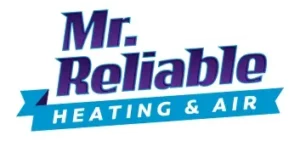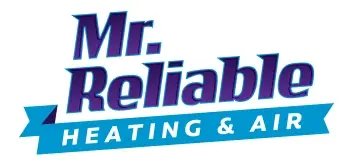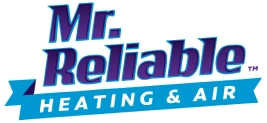There’s nothing quite as frustrating as an air conditioner giving up on you just when you need it most. Imagine a scorching afternoon where your AC provides no respite – common problems like poor cooling or strange noises leave you sweltering and restless. This is not just uncomfortable; it disrupts sleep and hampers daily activities, impacting not only you but your entire family’s well-being.
Understanding the root of these issues can make all the difference. Whether your unit is constantly running without effectively cooling the space or making unsettling sounds, knowing what to look for saves you from unnecessary stress. Some issues might be surprisingly simple to fix yourself with basic tools and a bit of guidance. In contrast, others might need professional attention. Here’s an in-depth guide covering everything from common symptoms to practical fixes, ensuring you can restore comfort to your home efficiently and confidently.
Common air conditioner problems include issues with the capacitor and fan motor. If the AC is not working after replacing the capacitor, it may indicate a need for a new fan motor. It is recommended to seek specific tutorials for your AC model and consider getting advice from a professional HVAC company like Mr. Reliable.
Common Air Conditioner Issues
In the sweltering heat of summer, a consistent and reliable air conditioner is a necessity. However, it’s not unusual for these systems to develop problems from time to time, leading to discomfort and frustration for homeowners everywhere. Let’s address one of the most frequent complaints: poor cooling performance.
Poor Cooling Performance
When your air conditioner runs but fails to cool your home quickly, there are typically two culprits at play: dirty coils or clogged filters. Think of your AC system as a finely-tuned machine; just like any well-oiled engine needs clean filters to perform efficiently, your air conditioner requires unobstructed airflow to work optimally. Over time, dust, dirt, and other particulates can accumulate within the coils and filters, obstructing the smooth transfer of heat from inside your home to the outside. This causes your AC system to overheat and underperform, resulting in poor cooling performance.
But how do you identify when your AC unit is struggling with poor cooling? A noticeable sign is if certain parts of your home feel warmer than usual despite the system running continuously. Furthermore, your utility bills may spike unexpectedly due to the increased effort demanded from your air conditioner. Therefore, in addition to regular filter maintenance, it’s essential to schedule periodic professional HVAC inspections to deep-clean coils and assess the overall state of your system.
Strange Noises
A sudden onset of humming, rattling, or squealing noises emanating from your air conditioner can be incredibly disconcerting. These sounds often signal underlying issues such as loose parts or a failing motor. If you hear any such noises, immediately power down your unit and inspect it for obvious signs of trouble.
For instance, a loose fan blade can create a rattling noise as it vibrates against the housing. On the other hand, a worn-out motor belt might produce a high-pitched squeal. Shaking or vibration during operation could suggest imbalanced internal components or worn-out bearings.
Once you’ve identified the source of the problem or determined that it requires professional attention, proceed with caution. Handling sensitive components of an air conditioning unit without adequate knowledge can lead to further damage. In such cases, consulting a qualified technician is often the best course of action.
Constantly Running Unit
An air conditioner that never seems to shut off can be both puzzling and concerning for homeowners. This persistent operation is often attributed to issues with thermostats or an improper refrigerant charge.
Miscommunication between the thermostat and the AC unit may result in continuous running as the ideal temperature setting isn’t being reached. On the other hand, inadequate refrigerant charge impacts the heat-absorbing capacity of the refrigerant in the evaporator coils, compelling the system to compensate by running longer than necessary.
Imagine having a constant stream of water filling up a glass that’s supposed to be automatically refilled when empty—similarly, an imbalanced refrigerant charge forces your system into overdrive mode.
In either case, seeking professional assistance is essential for accurate diagnosis and resolution of these issues. Failing to address them promptly can lead to further wear on internal components and potential long-term damage to your AC unit.
It’s crucial to pay attention to these common air conditioner issues as they can significantly impact both comfort and energy efficiency in your home. Regular maintenance and proactive troubleshooting can go a long way in ensuring that these problems are identified early and resolved effectively.
Understanding these common issues sets the stage for delving into specific thermostat malfunctions—the intricate components behind maintaining ideal temperatures within our living spaces.
Thermostat Malfunctions
Your thermostat serves as the brain of your air conditioning system, determining when to turn on or off based on the temperature you set. However, even modern programmable thermostats are not immune to problems. They may encounter software glitches that disrupt their functionality, leading to inefficient cooling or even total AC shutdown.
Before considering a replacement, try resetting your thermostat following the manufacturer’s instructions. This simple troubleshooting step might just resolve the issue—like a quick reboot for your thermostat.
If a reset doesn’t restore its normal function, it may be time to think about investing in a new one. Newer digital thermostats offer more precise control over cooling needs and advanced features that older models lack. For example, they often come with programmable options enabling specific cooling schedules throughout the day, conserving energy and saving on utility bills. Some models also offer Wi-Fi connectivity for convenient remote adjustments using a smartphone—an incredibly convenient feature for those constantly on-the-go.
When choosing a new thermostat, ensure compatibility with your HVAC system. Consider consulting a professional technician for installation to avoid potential issues from incorrect wiring.
Think of your thermostat as the conductor of an orchestra—when it’s working harmoniously, the performance (your air conditioner) runs smoothly and efficiently. However, when it starts missing beats or playing out of tune, the entire show suffers. Therefore, keeping your thermostat in top shape is crucial for optimal air conditioning performance.
Understanding the intricate details of how thermostats work and being able to recognize when they’re not functioning properly can make a significant difference in ensuring efficient and reliable cooling in your home.
Recognizing and addressing common air conditioner problems is key to maintaining a comfortable indoor environment. Now, let’s shift our focus to another prevalent issue—refrigerant leaks.
Refrigerant Leaks
Refrigerant is the vital component that keeps your air conditioning system running smoothly. It plays a pivotal role in cooling the air before it’s distributed throughout your home. Any leaks in the refrigerant can lead to decreased levels, directly causing your system to underperform, resulting in less effective cooling and increased energy consumption. So, how can you detect a refrigerant leak in your AC system? Keep an eye out for ice buildup on the unit and hissing sounds, as these are common signs of a refrigerant leak.
But why should you be concerned about refrigerant leaks? Tackling refrigerant leaks is not just about maintaining the cooling efficiency of your AC; it’s also about being environmentally responsible. When refrigerant leaks, it releases harmful substances into the atmosphere, contributing to environmental damage. According to a study by the Environmental Protection Agency (EPA), addressing refrigerant leaks and recharging the system can increase its efficiency by up to 20%. Dealing with these leaks doesn’t just improve your AC’s performance; it also significantly impacts energy conservation.
Take, for instance, if your AC is low on refrigerant due to a leak, it has to work harder to cool your home, using up more energy. This extra strain not only reduces cooling capacity but also ramps up your electricity bills. Addressing refrigerant leaks promptly ensures optimal cooling performance, contributes to environmental sustainability, and saves on utility costs.
Given that handling refrigerant leaks involves precise measurements and the handling of chemicals, it’s imperative to hire a qualified technician for this task. A trained professional possesses the knowledge and expertise required to accurately diagnose and address refrigerant leaks. They use specialized equipment to measure and recharge the refrigerant correctly, ensuring that your AC functions at its best capacity.
In conclusion, being attentive to signs of refrigerant leaks and promptly addressing them through professional assistance improves your AC’s performance and plays a vital role in environmental sustainability.
Now that we’ve uncovered the crucial details about dealing with refrigerant leaks in your AC system, let’s move on to examine another significant issue—Airflow Blockages.
Airflow Blockages
When it comes to air conditioner problems, blocked airflow is a notorious culprit. It’s like trying to breathe through a straw—your AC struggles to move cool air through your home efficiently. Let’s break down the most common factors causing airflow blockages and how to fix them.
Step I – Inspect Air Filters
Think of your air filters as the lungs of your AC system. If they get clogged with dust, debris, or pet hair, it restricts the amount of air that can flow through. As a result, your AC unit has to work harder, which can lead to reduced efficiency and higher energy bills. It’s important to check these filters monthly during peak use, and replace or clean them as necessary. Remember, a dirty filter can reduce airflow by up to 20%, so regular maintenance is crucial to keeping your AC system running smoothly.
Pro Tip: Consider setting a recurring reminder on your phone for monthly filter checks. This small habit can go a long way in maintaining proper airflow and maximizing your AC unit’s efficiency.
Step II – Check Ducts
Blocked or leaky ducts are another common cause of restricted airflow in your home. Imagine the ducts as the arteries carrying cool air throughout your space. If they’re blocked or leaking, the cool air won’t reach every room effectively. HVAC professionals often use thermographic cameras to spot leaks in ductwork, offering a reliable way to identify and address this issue. By addressing any blockages or leaks, you can optimize the distribution of cool air in your home and ensure that every room receives the full benefit of your AC system.
Expert Insight: A simple visual inspection of ducts may not always reveal underlying issues, especially if they’re hidden within walls or ceilings. Professional assistance can ensure comprehensive detection and resolution of any duct-related problems.
Step III – Clear Vents
One often overlooked aspect of maintaining optimal airflow is ensuring that all supply and return vents are clear from blockages. Do a quick tour around your home to check if any furniture or drapes inadvertently impede the airflow from vents. Even if it seems trivial, such blockages can significantly impact the efficiency of your AC system by preventing smooth air circulation. Neglecting vent blockages could lead to uneven cooling throughout your home, resulting in certain areas feeling warmer than others.
Regularly addressing these three key points – checking and cleaning air filters, inspecting ductwork for leaks and blockages, and ensuring unrestricted airflow from vents – plays an essential role in ensuring consistent cooling and overall efficiency of your air conditioning system. With regular maintenance checks in place, you can optimize airflow and ultimately enhance the performance of your AC unit.
Transitioning now from airflow blockages, let’s shift our focus to another critical issue that plagues many air conditioning systems– Compressor Failures.
Compressor Failures
The compressor functions as the heart of your air conditioning system, akin to the engine of a car. It is responsible for circulating refrigerant throughout the entire system to remove indoor heat and maintain a cool and comfortable space. However, when the compressor starts acting up, serious problems may arise.
How do you know if your compressor is failing?
Firstly, you might notice that the unit is struggling to start or has reduced cooling capacity—indicating that it’s not functioning at its best. Additionally, unusual noises emanating from the unit can also signal a failing compressor. These are all red flags indicating a potential issue with your compressor.
So, what causes compressors to fail prematurely? Electrical issues often play a significant role in this. A notable percentage of compressor failures are attributed to malfunctions in electrical components. Overheating is another common cause of compressor failure, potentially leading to significant damage and system shutdown.
It’s crucial to stay on top of regular maintenance for your air conditioner. This includes ensuring adequate refrigerant levels and making sure that coils are clean and functioning properly. Proactive, regular attention to these aspects can significantly prolong the life of your compressor, ultimately saving you money over time.
But what happens if your compressor does fail? The costs involved in replacing a failed compressor can be steep—ranging from $1,200 to $2,500. This underscores how important it is to take care of your air conditioning system and address issues early before they escalate into major—and costly—problems.
Understanding the workings and warning signs of a failing compressor is essential for maintaining the performance and longevity of your air conditioning system.
DIY Maintenance Tips
Maintaining your air conditioner doesn’t need to be complicated or costly. With a little care and regular attention, you can prevent many common problems before they become major issues, ultimately saving you time, money, and discomfort.
Step I – Regular Cleaning
One crucial step is keeping the exterior condenser coil clean to prevent a range of common AC issues. Dirt and debris can accumulate and block airflow, reducing your system’s efficiency and potentially leading to overheating. To clean the coil, use a gentle spray from a garden hose to remove dirt and grime. Avoid using high-pressure settings as this might damage the delicate fins of the coil.
Step II – Seasonal Checks
It’s important to do seasonal checks to ensure your AC system runs smoothly throughout the year. This includes tightening any loose electrical connections, which can occur over time due to vibration. Properly oiled motors run more efficiently, so make sure to oil the moving parts as suggested by the manufacturer. Also, check refrigerant levels to ensure they are at the recommended capacity for optimal performance.
Step III – Filter Replacements
Regularly replacing filters is an essential part of air conditioner maintenance. Over time, filters get clogged with dirt, dust, and other particles, reducing airflow, efficiency, and air quality. High-efficiency particulate air (HEPA) filters are recommended for their superior ability to trap small particles and improve indoor air quality. If you have pets or live in a dusty area, you may need to replace your filters more frequently. In general, it’s best to check them monthly and replace them every 90 days to ensure your AC system runs smoothly.
For comprehensive maintenance guides and troubleshooting tips for all your air conditioning needs, visit our website at Call Mr. Reliable. Our articles are designed to help you keep your air conditioning system in top shape year-round.
By following these simple DIY maintenance tips, you can ensure that your air conditioning system operates at its best efficiency and extends its lifespan, providing you with cool comfort when you need it most without unexpected breakdowns or costly repairs.
If you are unsure how to handle any issue with your ac unit – give Mr. Reliable a call!
Our friendly team services all of Houston and surrounding communities. We are happy to help you with any issue you may be experiencing with your HVAC system. Schedule Online at Call Mr. Reliable!



